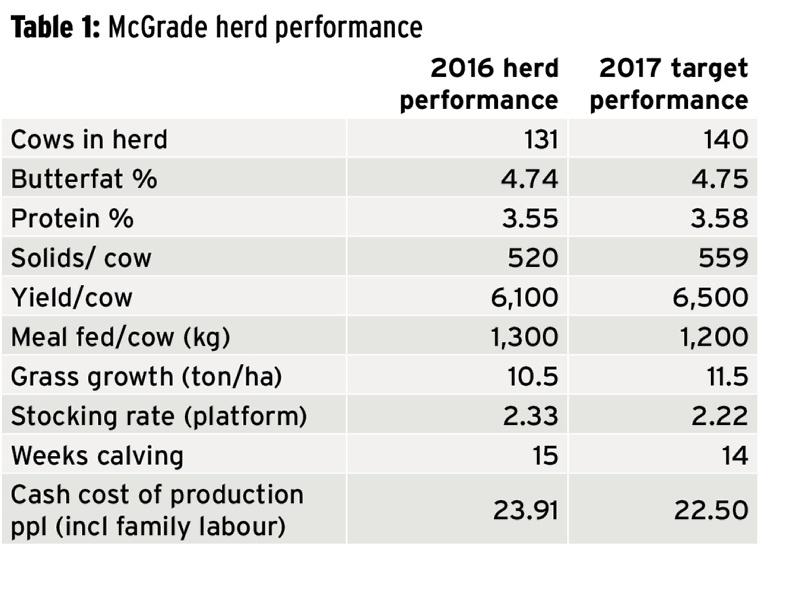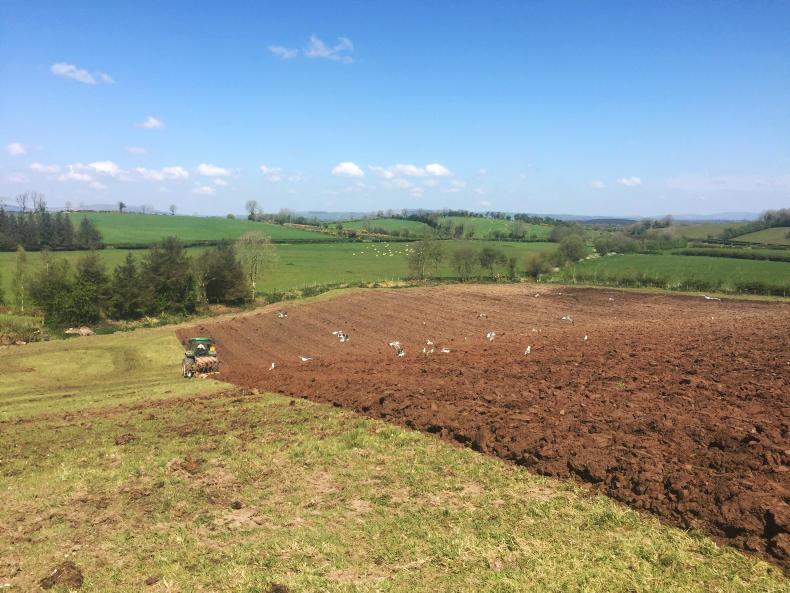The McGrade herd is now over 200 days in milk on average, cows are over the peak milk production period and grazing night and day on the grazing block. Concentrate has been removed from the parlour feed, with good quality grazed grass the only feed going in.
Getting the grazing management correct for Kevin is the key to hold the daily production for the herd. Currently cows are producing 21 litres, with butterfat 4.10% and protein 3.71%, with the SCC average for the herd last week at 73,000 cells/ml.
Grazing down tight in each paddock with low residual of 50-60kgDM/ha is allowing top-quality regrowth for the next rotation. Kevin is going on with 30 units of nitrogen every 25 days on the grazing platform. Currently 39ha is available in the grazing block, which leaves the stocking rate on the block at 3.47 cows/ ha. Grass growth last week was at 67kg/ha and cover is at 194kg DM/cow, suggesting he has plenty of grass.
Is grass providing sufficient energy for the herd?
Based on measurement of grass removed from paddocks, the herd average grass intake is 18kg DM/cow/day. Grass samples taken across the Dairylink group suggest the current metabolisable energy (ME) in grass is 11.1MJ/kg DM. So consumption per cow multiplied by the grass ME gives us the total energy going into each cow: 200 MJ/cow supplied by the grass.
On the demand side, cows are currently doing 21 litres, which requires 110MJ energy. Cow maintenance on top of this takes the total energy requirement to 185MJ/cow. So, based on measurement information, Kevin is getting more than enough energy in for the herd on grazed grass alone: 200MJ supplied by grass with demand at 185MJ.
Kevin McGrade Co Tyrone
Good ground conditions have allowed us to complete field work, such as essential drainage and maintaining some open drains. A total of 60 acres has been reseeded on the farm, in what can only be described as optimal conditions.
All the ground was ploughed and reseeded this month with a mixture of tetraploid and diploid late heading grass seed used. The main varieties used include Abergain (tetraploid), Aberchoice, Aberavon and Aberwolf (diploids). The area reseeded is mostly going for silage, so I wanted seed with high energy and growth characteristics. I have sacrificed sward density to an extent in order to improve yield and energy in the sward, I will be keen to see how these varieties perform on this farm.
The breeding policy on the farm is focused on sires with high fertility traits and improving milk components in the herd. The cow type is critical for the future of the farm, the cow must be fertile and able to utilise grass. Sires used are still Holstein, but we have selected on fertility and milk components with no emphasis on milk volume.
Breeding started on 1 December, with scan results showing 109 cows in calf on 1 March – working out at 83% of all cows in 12 weeks. The focus this year has been on sire selection with fertility.
The main sires used on the herd are YAB, Vincent, Ruddy and Candy. On heifers, KSK and JMR have been used. The average EBI fertility sub-index for the main milking cow sires used on the farm is €150, which puts them up there with the best on fertility.
Silage was cut last week in ideal conditions, with no additive used. Slurry will go on at 2,000gal/acre, and I plan to use 24-6-12 on the second-cut area. A compound will be used again on the grazing block on the next rotation to help boost phosphorus and potassium.
Currently we have spread a total of 75 units (excluding slurry) of nitrogen on the grazing block. We feel early slurry spread on this area in February with an umbilical system worked really well and got grass moving.







 This is a subscriber-only article
This is a subscriber-only article














SHARING OPTIONS: